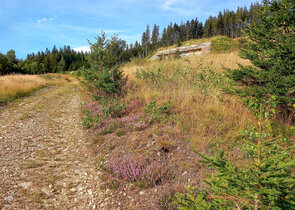The European Larch More Native than Previously Thought. How to manage it in Specially Protected Area

The idea that the European larch (Larix decidua) is native only to the Nízký Jeseník/Low Jeseník Mts. (northern Moravia and southern Silesia) between the Alps and the Carpathians is being changed by new research documenting larch surviving for thousands of years at some sites in the North Bohemian sandstones. We do not have such detailed research elsewhere, so we do not know if larch grew there for a long time. Nevertheless, shifts and uncertainties in knowledge need to be taken into account in conservation planning. It does not make sense to eliminate larch across the board from common regularly managed commercial forests and within protected areas. On the other hand, in rocky habitats and areas less affected by forestry, it should be protected as a potentially interesting and valuable relic for nature conservation. The case of the European larch shows how scientific knowledge is progressing and how the interests of nature conservation and production forestry can be reconciled.
Nature Conservation 2025 — 31. 7. 2025 — Research, Surveys and Data Management — Print article in pdf
How has the landscape of our protected areas changed over the past 70 years?

The Czech landscape has gone through significant changes over the past decades. These changes have also affected protected areas such as National Parks (NPs), Protected Landscape Areas (PLAs) and Natura 2000 sites. An analysis of landscape changes, their assessment, and understanding may lead to better management and future governance of these areas.
Nature Conservation 2025 — 31. 7. 2025 — Research, Surveys and Data Management — Print article in pdf
Project Mapping and Species Inventories (Monitoring 2) Has Been Completed

The Nature Conservation Agency of the Czech Republic (NCA CR) is tasked with monitoring the condition of habitats and species, which can broadly be referred to as biodiversity monitoring. The monitoring and mapping of species and habitats significant for the European Union, which serve to fulfil the reporting obligations under EU directives, are funded by the state budget. However, the data collection needs are broader, and to meet them, the NCA CR proposes and manages a range of projects. The most extensive in terms of both objectives and funding are financed by the Operational Programme Environment.
Nature Conservation 2025 — 31. 7. 2025 — Research, Surveys and Data Management — Print article in pdf

